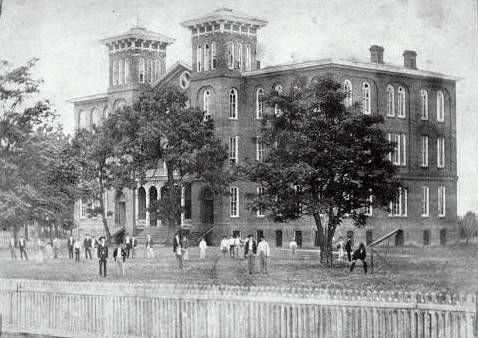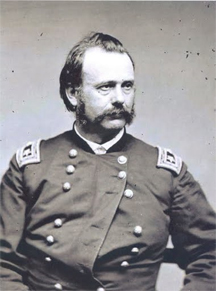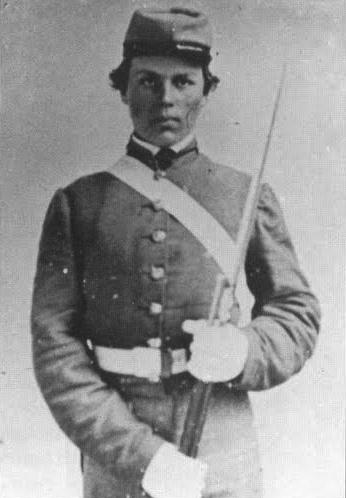When The University Of Alabama
Came To Auburn's Rescue
By Terry Barkley
This article appeared on Terry Barkley's Marion Military Institute Archives blog in January of 2009.

East Alabama Male College (Old Main), Auburn, Alabama, in 1883.
(Credit: Auburn University Libraries Special Collections and Archives)
In July, 1864, Union cavalry under Major General Lovell H. Rousseau raided into East Alabama destroying iron furnaces, mills, and railroad tracks of the West Point and Montgomery Railroad. One important rail stop was Chehaw Station near Auburn, Alabama.

Union MG Lovell H. Rousseau (1818- 1869). (Credit: The Library of Congress)
|
The alarm went out to assemble as many Confederate troops as possible to thwart the Federal raid. The Alabama Corps of Cadets (ACC) of the University of Alabama - known at the Katydids - were then on a fifteen-day furlough following their graduation exercises in Tuscaloosa (remember, that the ACC was commanded by COL James T. Murfee, later founder and first president of Marion Military Institute). Thus, the call went out to those cadets living in or passing through Montgomery to join the Confederate effort to stop Rousseau. Some 54 cadets in the Montgomery area answered the call. Although there were new British Enfield Rifles in the Confederate warehouses in Selma, time was of the essence, and the Katydid Cadets were given ancient re-bored and rifled smoothbore muskets of dubious operation. The Cadets joined Lockhart's Battalion (mostly young boys) and some conscripts from Camp Watts. These 500 Confederates were quickly transported from Montgomery to Chehaw Station (Beasley's tank) near Auburn on the West Point and Montgomery Railroad. Rousseau's cavalry had already rampaged through Auburn.

A cadet officer in the Alabama Corps of Cadets (ACC) during the Civil War. (Credit: Hoole Special Collections Library, University of Alabama. Reprinted from The Young Lions: Confederate Cadets at War, 1997, by James Lee Conrad)
|
On July 18, 1864, at Beasley's Farm, some six miles east of Chehaw Station, the two sides collided in a spirited fight following a foiled ambush attempt by Rousseau's cavalry. Pouring from the train and fighting from behind a rail fence, the Confederates eventually took cover in a ravine. Depending upon which side's report you read, either the South won the battle or the Federals did - each side claimed victory! However, Confederate casualties numbered about 80 including some 40 killed, compared with the far lighter losses of three killed and 8-10 wounded for the seasoned and heavily armed (Spencer carbines) Union cavalrymen. Two of the Katydid Cadets were wounded, the first casualties of the war for the Alabama Corps of Cadets (ACC) as a unit.
At any rate, the Katydid Cadets reportedly moved on to the village of Auburn where they were technically still on furlough. The East Alabama Male College (1856), later Auburn University, was closed for the war and the buildings were being used as a Confederate hospital for some 400 Texas soldiers. Sound familiar? Sorry, no, the Katydid Cadets did not party down at the KA House on the Auburn campus, but it does appear that the Katydid Cadets were warmly received and that they did find "comfort" in Auburn.
|